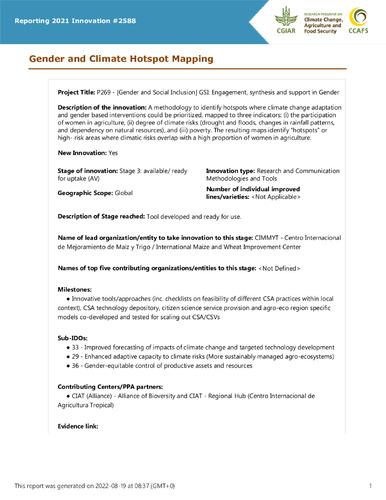GENDER at COP 29
 Nana Kofi Acquah for IWMI
Nana Kofi Acquah for IWMI
The CGIAR GENDER Impact Platform will be joining United Nations Convention on Climate Change (UNFCCC) COP 29 in Baku, Azerbaijan from 11 November-22 November 2024.
21 November has been set as the Gender day.
GENDER Events at COP 29

Gender, youth and social inclusion for climate action and food, land and water system transformation

Strengthening Gender-responsive Climate Policy and Action through Vulnerability Hotspot Mapping and implementation of Gender Action Plan in Africa
Gender Equality for Climate Justice: Why it Matters at COP29
At COP28, significant progress was made towards integrating a gender perspective into climate policy and action. Parties, United Nations entities, UNFCCC constituted bodies, and relevant organizations were called upon to review progress, gaps, and priorities in implementing the enhanced Lima work program on gender and its gender action plan (GAP).
Kenya, among other parties, made its submission recognizing contributions from the CGIAR GENDER Impact Platform and other partners in meeting the goals of the GAP. A synthesis report based on these submissions formed the basis for workshops with negotiators and relevant entities from June 3-6, 2024, at the Bonn Climate Change Conference (SB60). The report highlighted progress, challenges, gaps and priorities in implementing the GAP. Parties developed a draft decision for consideration and adoption at the upcoming COP 29 in Baku, Azerbaijan.
Read more on this CGIAR Issue Brief Series for Informing COP 29
Gender equality cannot be last on the agenda at COP29 climate talks
The centrality of gender to climate action has been recognised by the Azerbaijan presidency of COP29, which assigned November 21, the second-from-last day of the UN climate negotiations, as Gender Day.
However, gender equality should really feature as an urgent and cross-cutting issue from day one because climate change is widening existing gender gaps and severely impacting women’s livelihoods and well-being. Women can be powerful agents of climate action if included in decision-making processes and given access to the right resources.
From smallholder farmers to wage labourers, small and medium enterprise owners and even farmer producer organisations, women’s reliance on agriculture and natural resources to make a living renders them more vulnerable to climate shocks and stressors than men within agriculture.



